Carbon, Automobiles, Bebop, and Fashion
Entire industries become transformed when a critical mass adopts openness. Software is past this tipping point.
Open source has grown far beyond the mainstream. It has become the bedrock over which the mainstream flows. Today it is hard to find a Fortune 500 company with an IT infrastructure that does not depend, in some fundamental way, on open source software. Kim Polese - Open Sources 2.0
As every company is becoming a software company, what happens when every industry flows over the bedrock of open source?
Early commercially available computers often came with the source code of their software. You could modify it to fix bugs or integrate it into your environment. Academics, researchers and corporations often participated in open collaboration to write software that made computers useful. In the 60s and 70s, as software became more advanced and the cost of producing it increased, vendors began using intellectual property laws to impose copying restrictions and would often withhold the source code to prevent competitors from copying it. Secrecy was seen as a competitive advantage, disempowering developers and turning customers into pure consumers.
This lack of freedom drove Richard Stallman to start the Free Software Movement in the 80s with the goal of creating an operating system that any user could–if they had the resources–run, study, share, and improve without needing permission or fearing retribution; this is how Stallman conceptualized freedom for software users.
The 90s then brought the release of the most popular free software project to date, the Linux kernel, which was the final puzzle piece in creating a completely open operating system. The Internet also brought forth several other free software components, including the Apache web server, MySQL database, and PHP programming language, and the Netscape web browser, which was the basis for what is now Mozilla Firefox.
By the late 90s, it was clear that there were many practical advantages to free software, but the social imperative of the free software movement turned some people off. The term “Open Source” was proposed and quickly received adoption. In the last 15 years, we’ve seen massive adoption of open source software, even to the point where staunch opponents like Microsoft are openly embracing it.
Open source is probably one of the most energizing projects our team has been working on. Immo Landwerth – Microsoft
So, what happens next? Fortunately, the open sharing of information predates computers and Internet.
Carbon
The phrase “carbon-based life form” is a redundant expression, because currently, all known life forms are carbon-based. And there is a good chance that, if life exists somewhere else in the universe, it will also be carbon-based. Now, I say “good chance” because scientists will call you a “carbon chauvinist” if you make the claim with certainty.
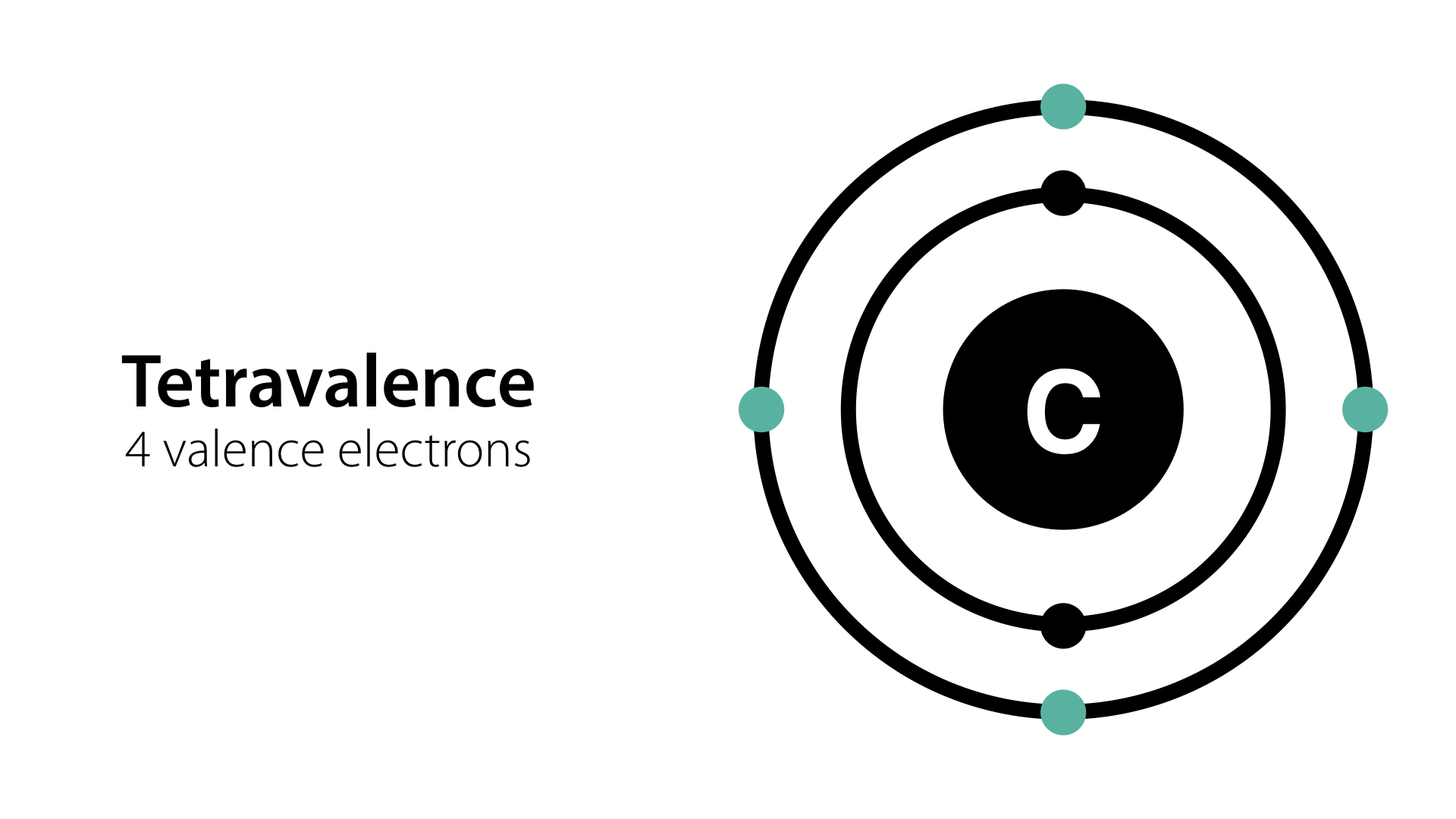
The property that makes carbon most suitable for life is that it has four electrons in its outer shell, but it prefers to have eight. Carbon will gladly share it’s four electrons with other atoms, creating the best kind of chemical bond.
Having four electrons to offer and wanting four more to share, Carbon is able to bond with an incredible number of other elements. There are nearly ten million known compounds that contain carbon. It has a particular fondness for hydrogen, nitrogen, oxygen, and other carbon atoms. This openness for sharing electrons makes Carbon incredibly well-suited for creating layers and layers of increasingly complex systems that perform basic life functions, from DNA replication to cell metabolism to the firing of neurons in our brains.
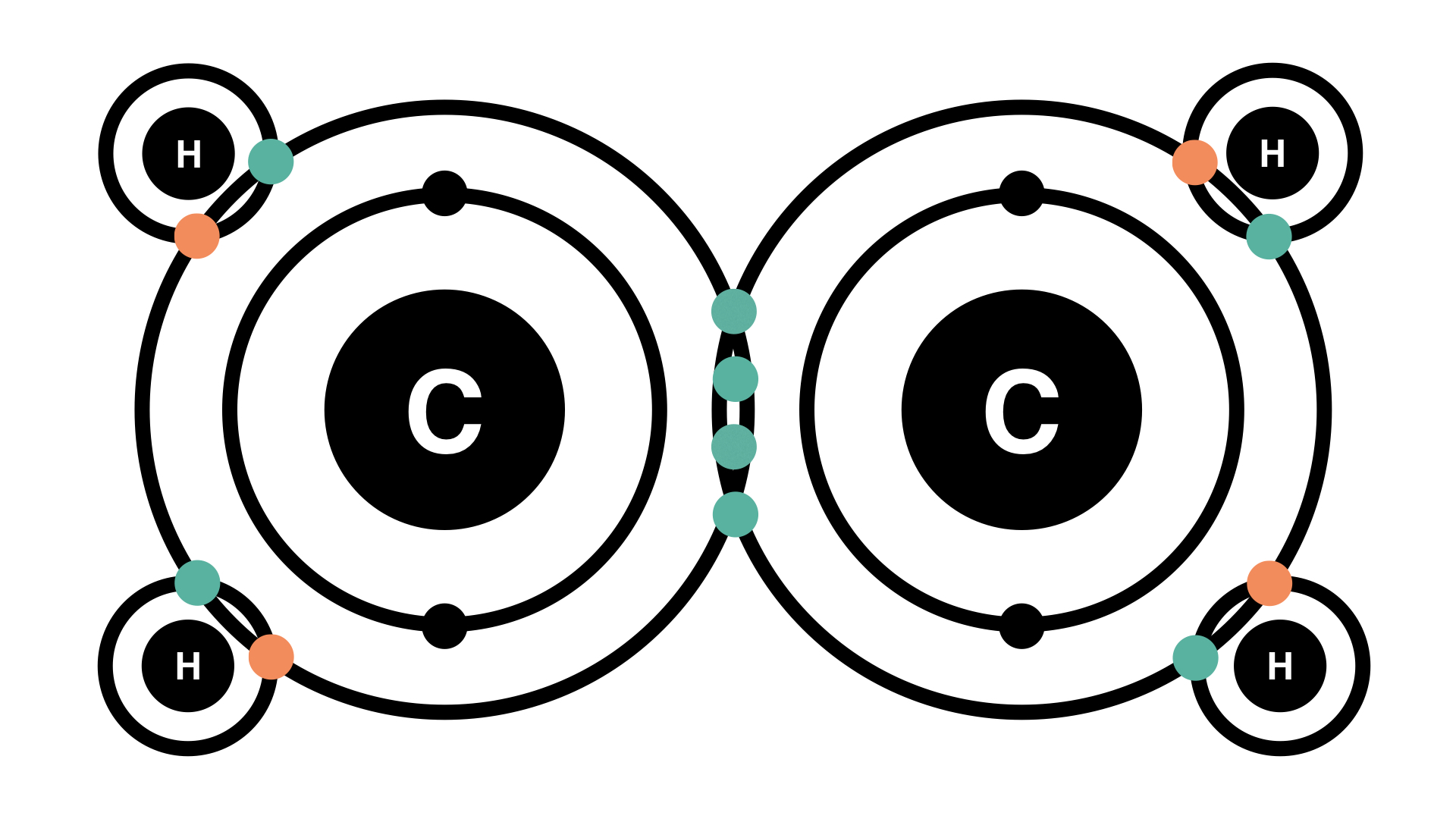
In his book Where Good Ideas Come From, Steven Johnson calls this a “stacked platform”, and stacked platforms are the way that we advance as a society. Stacked platforms obscure the details of the layer below them and allow new problems to be solved. This platform means that we don’t have to think about how cells metabolize carbohydrates when we go for a run, or how white blood cells defend against disease, or how the neural networks in our brain works when we are obsessed with a project. The details of the layers below are abstracted.
There is one other element that displays many of the properties of Carbon, but for various reasons is not suitable for life. Silicon sits directly below carbon in the Periodic Table of elements, which means that it also has four valence electrons and readily bonds to itself. However, it is not as open to bonding with other elements.

Ironically, Silicon forms the base layer in arguably the greatest platform that carbon-based life has created to date: computers.
Software, like carbon, is inherently suitable for building stacked platforms. We solve a problem in code, and then can repeatedly execute that solution at almost zero cost. You can take existing components and combine them in interesting ways to solve new problems.
What happens when we chose to make these platforms open?
Automobiles
In the early 1900s, the most cutting edge startups in the country were trying to popularize a technology called “the automobile”.
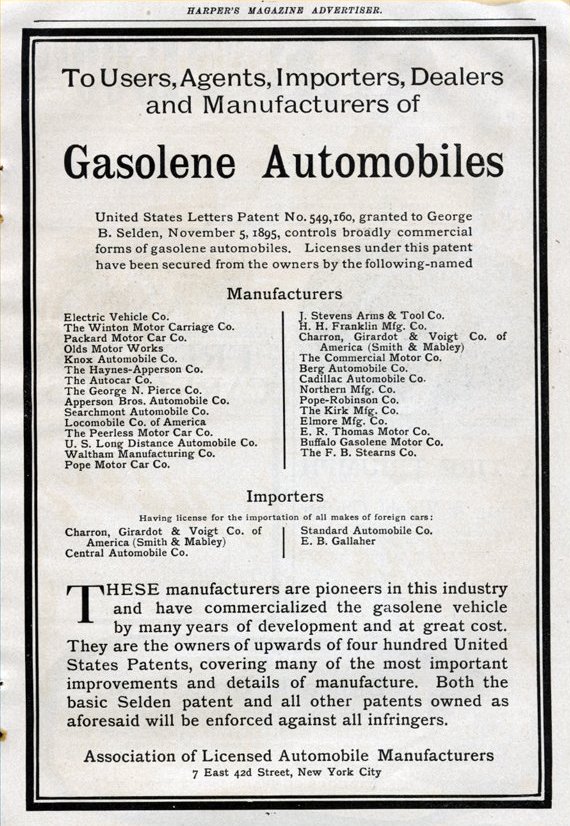
As many startups were making progress towards an affordable automobile for the mass market, a series of notices started appearing in mailboxes and trade journals.
Notice: Users, Agents, Importers, Dealers and Manufacturers of Gasoline Automobiles
The patent granted to George B. Selden, Nov 5, 1895, controls broadly all gasoline automobiles which are accepted as commercially practical. Licenses under this patent have been secured from the owners by the following named…
These Manufacturers are pioneers in this industry and have commercialized the gasolene vehicle by many years of development and at great cost. They are the owners of upwards of four hundred patents, covering many of the most important improvements and details of manufacture.
George B. Selden was awarded a patent in 1885 for the “Road Vehicle”, which is essentially a horse carriage powered by a gasoline combustion engine. Note that this was not the first gasoline combustion engine (which was created in 1859) or even the first “automobile”. The idea of the automobile had existed for most of that century. But the Selden patent was used to monopolize the industry and force manufacturers to adhere to their demands or risk a lawsuit.

In 1902, a young entrepreneur named Henry Ford attempted to secure a license from the Association of License Automotive Manufacturers, but was denied because of “past business failings”. Getting denied may have had more to do with the influence of an established competitor in Detroit named Fredrick Olds being on the board of the association.
Ford proceeded to make cars and the Association eventually filed a lawsuit against him. After a long and public battle, Ford won a challenge and the patent was overturned in 1911.
“It is perfectly safe to say that George Selden has never advanced the automobile industry in a single particular…and it would perhaps be further advanced than it is now if he had never been born.” Henry Ford
Aside: I didn’t realize Hacker News was a thing in 1911.
Shortly after, Ford helped establish what eventually became know as the Motor Vehicle Manufacturers Association, which established a cross-licensing agreement among all US auto manufacturers. Patents were shared openly and without the exchange of money among all the manufacturers. Anyone could join the Association and gain access to the existing patents on the condition that they contributed all of their patents to the pool.
Despite World War I and Black Friday, the automobile industry experienced explosive growth over the next 30 years.
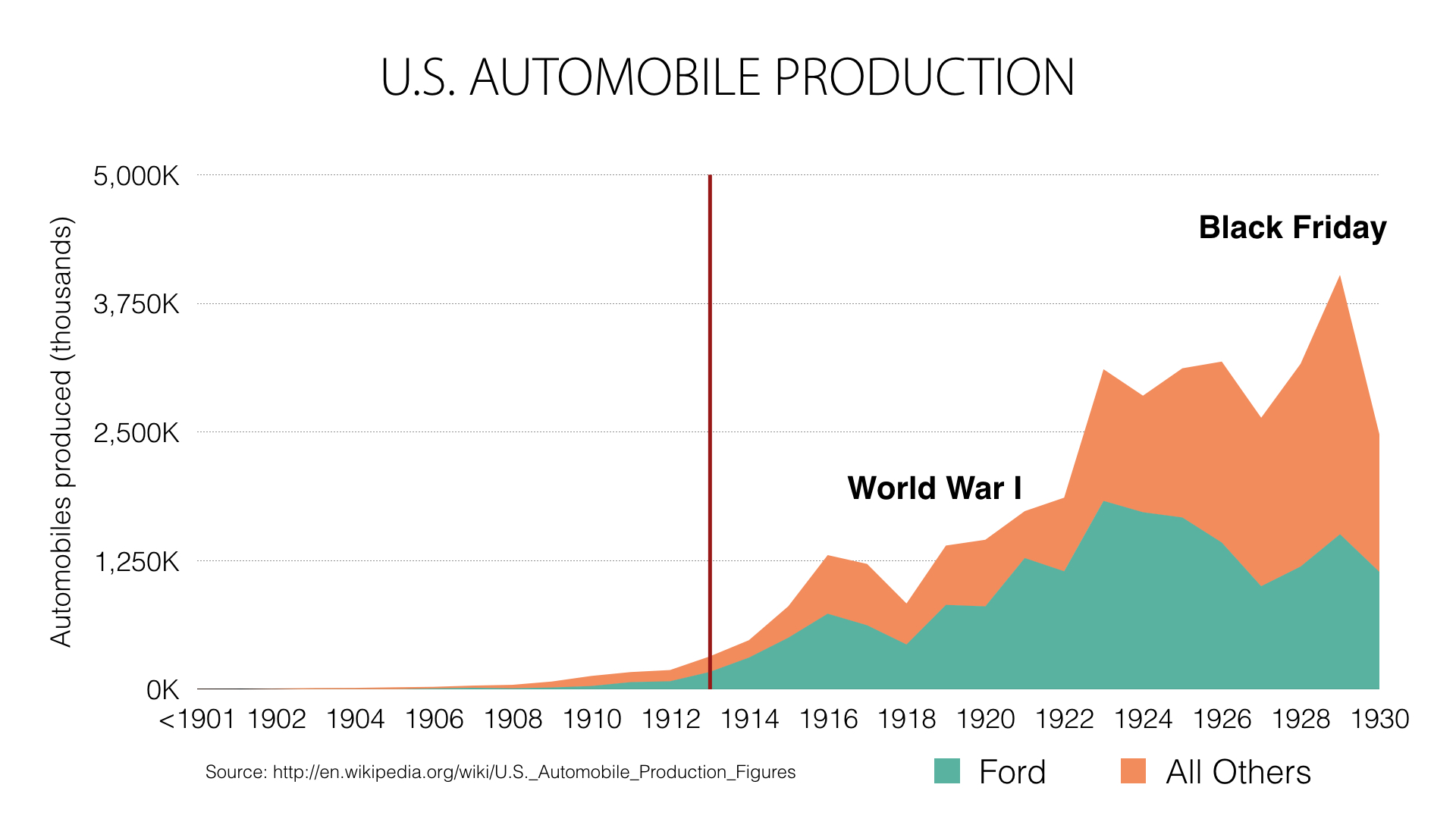
“The long-zoom approach lets us see that openness and connectivity may, in the end, be more valuable to innovation than purely competitive mechanisms.” Steven Johnson - Where Good Ideas Come From
Instead of expending their efforts on reinventing the wheel, early auto manufacturers created an industry and the infrastructure to support it. Automobiles and carbon show us that openness creates a platform that raises society up and allows us all to focus on solving the next problem.
This is what open source is doing in the software world. By licensing the building blocks of software systems for others to freely use, we are opting-in to the model of the early automobile industry, where anyone can use the best ideas. Through competition we grow an entirely new industry.
This is all coming full circle in the auto industry with Tesla licensing all their patents for anyone to use.
We believe that Tesla, other companies making electric cars, and the world would all benefit from a common, rapidly-evolving technology platform.
Technology leadership is not defined by patents, which history has repeatedly shown to be small protection indeed against a determined competitor, but rather by the ability of a company to attract and motivate the world’s most talented engineers. We believe that applying the open source philosophy to our patents will strengthen rather than diminish Tesla’s position in this regard. Elon Musk - All Our Patent Are Belong To You
Carbon and automobiles show what can happen when we create open platforms. What happens when everyone then builds on these open platforms?
Bebop
Bebop is a form of Jazz that appeared in the 1940s, fifty years into the evolution of jazz.
Jazz is also a stacked platform, built on African rhythms, European harmonic accompaniment, the blue notes of racial tension, and a surplus of post-civil-war military instruments. Jazz is known for being incredibly competitive. Musicians take turns improvising in jam sessions, trying to one-up each other and then mimicking the sound they just heard.
The evolution of Jazz is marked by the repeated pattern of someone playing in a slightly different style and everyone else imitating it. A trumpet player tried to play like Louis Armstrong because that’s the greatest trumpet they’d ever heard.
Charlie Parker was instrumental in the creation of the style of Jazz called Bebop. There’s an anecdote that the reason he played in this style that was because he didn’t think white musicians could copy him. Today, Bebop is what most of us think of when we think Jazz.

Charlie built on the open platform of Jazz. Charlie didn’t have to popularize Jazz or blues scales or invent the saxophone. His innovation was combining things that already existed in new and interesting ways. Bebop may or may not have happened without Charlie Parker, but once it existed, it wasn’t terribly difficult for other musicians with similar backgrounds to incorporate his innovation.
History repeats itself in software. Even the most innovative and proprietary companies–like Apple–are at most a few years of ahead of the industry. The success of their innovation depends open source and open standards, which they have greatly contributed to, and any competitor is free to also build upon these stacked platforms.
What happens when every successful endeavor is predicated on open platforms? What happens when openness prevails?
Fashion
In fashion, not only is copying allowed, it is the norm. Courts (in the US, at least) have ruled that apparel is too utilitarian for copyright and patent protection. They didn’t want a handful of designers owning the fundamental building blocks of our clothing. Anyone can copy any garment and sell it as their own design.
In her incredible TED talk, Johanna Blakley argues that a culture of copying in the fashion industry has created an open ecology of creativity where anyone can use the best ideas. Fashion designers have pleasure of sampling from the entire history of fashion design without talking to a lawyer. And the result is a vibrant and innovative fashion industry. Gross sales in industries with low and high intellectual property protection are one window into this phenomenon.
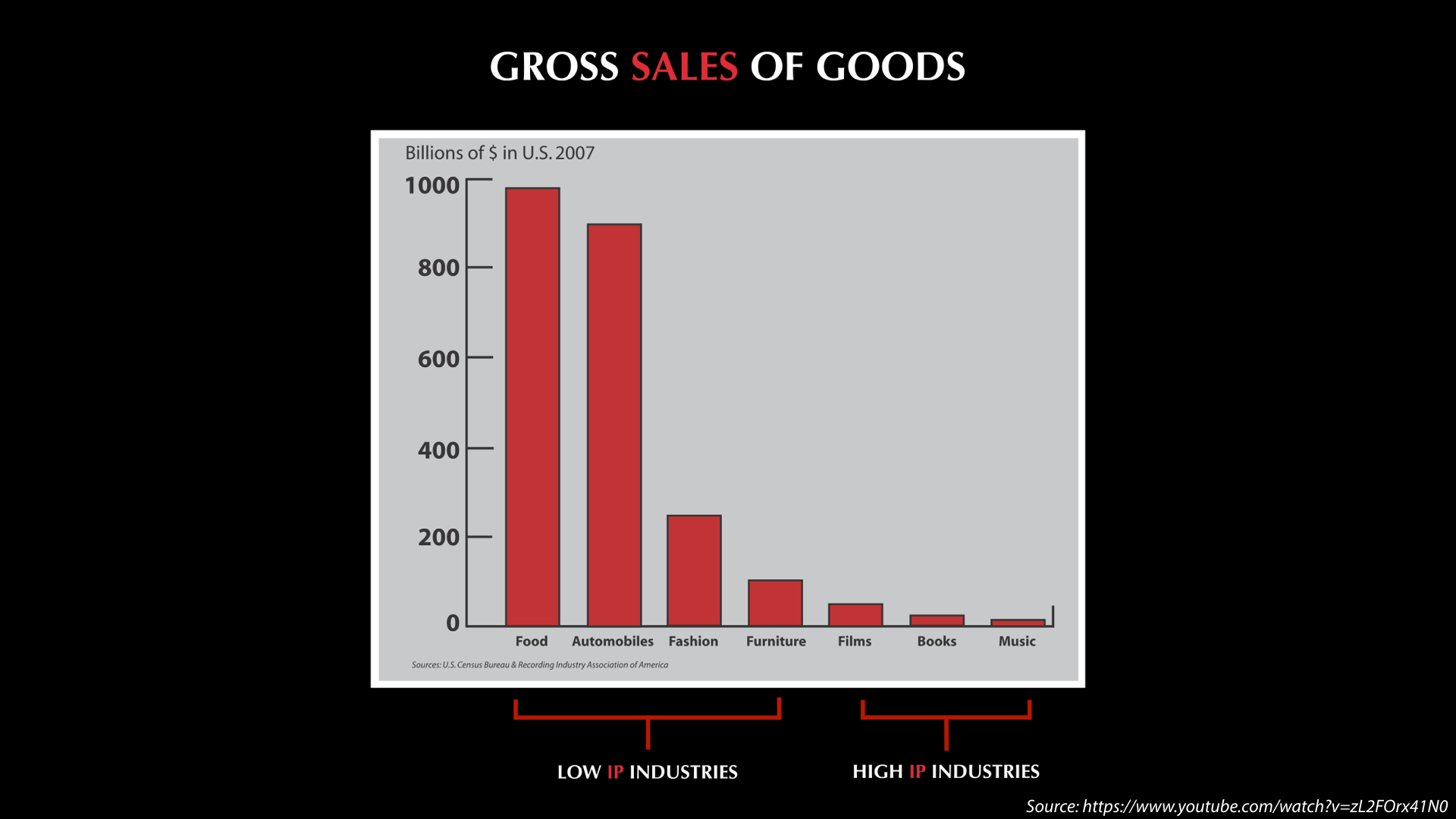
Instead of being a race to the bottom, industries that can’t opt out of openness are a race to the top. Those that want to lead in the fashion industry are the ones who are innovative or able to popularize the ideas lost to history. Meanwhile, the “fast fashion” industry makes a good living copying the leaders, and those knockoffs elevate the leaders to icons.
So I ask again: As every company is becoming a software company, what happens when the bedrock of every industry is open source? What happens when you can’t opt out of openness? Carbon, automobiles, bebop and fashion give us a glimpse into that future.
This is an essay form of a talk I gave at Open Source // Open Society on April 16, 2015 in Wellington, NZ. Check out the slides and video.
 I am Brandon Keepers, and I work at
I am Brandon Keepers, and I work at